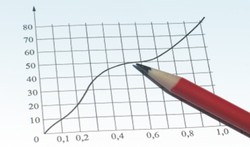
Over the years, that question has brought hundreds of people to the Covenant Eyes website, looking for pornography statistics. But because of the sensitive nature of the topic, in-depth studies are rare, and many are old.
The Barna study included 527 people who have used Covenant Eyes for more than 5 years. Many of them use it for protection of their families, and many use it because they want accountability to help them through the struggle.
- Definition of porn: Among those who use porn, only less than 1/3 of general population adults thought fully nude dancing, fully nude still pictures, sex scenes in a written story, texting about sexual acts with someone you don’t know, or partially nude show constitute porn; over 2/3 of Covenant Eyes users who have sought out porn considers those things as porn. Covenant Eyes users either originally had, or have grown to have, a more sensitive understanding of what constitutes porn.
- Addictive nature of porn: Among users of porn, only 55% of general population adults think porn is “definitely” addictive; 94% of Covenant Eyes users think so.
- Sexting: Covenant Eyes teens and young adults are 1/3 as likely to have sent a nude image over the Internet.
- Recommended: More than 3/4 of youth pastors recommend accountability software as a resource for those who struggle with porn, and believe it is effective.
- When asked to prioritize what people consider to be immoral, adults put “not recycling” pretty near the bottom of their list. Teens and young adults, however, consider “not recycling” to be more immoral than viewing pornography!
- 22% of young adults aged 18 to 24 consider porn to be good for society. 8% of that age group actually think it is “very good for society.” Nobody over age 50 thought so.
- The 18 to 24-year-old group is more likely than any other age group actively to seek out porn (57% at least monthly). Meanwhile, over 70% of those over 50 say the “never” actively seek out porn.
While there is no cause and effect relationship, it is clear that people who use porn are more likely to think it’s fine to do so – with the exception of Covenant Eyes users, pastors, evangelical Christians, and many people over 50.
- Data from The Porn Phenomenon shows that the definition of pornography is much different today than it was in the days of Ricky and Lucy sleeping in separate beds with their pajamas on. An image of sexual intercourse is NOT pornography to 21% of adults. A fully nude image that is sexually arousing is NOT pornography to 47% of adults. A fully nude image is NOT pornography to 76% of adults.
- Only about 50% of respondents under age 50 who use pornography think that sexual images are “always wrong” if they portray sexual acts that may be forced or painful.
- Only about 40% of respondents under age 50 who use pornography thought that sexual images are “always wrong” if the images are of someone being depicted in a demeaning way. Common examples of demeaning images are women wearing dog collars and leashes being led by their masters and even eating and drinking from dog dishes. Other images show women with foul and obscene labels written on their bodies, or in some cases tattooed on their bodies. And it really is much worse, but not fit for this writing. How can 40% of any civilized society think that’s OK?
- More than 80% of pastors say that an image that is sexually arousing is porn. Only about half (53%) of general population adults think so. Makes me wonder about the other 20% of pastors…
- 73% of pastors feel at least somewhat equipped to deal with pornography when someone comes to them for help. But only 7% of churches have any program whatsoever.
- 64% of youth pastors and 57% of pastors struggled with pornography currently or in the past. 54% of youth pastors who currently struggle “live in constant fear of being discovered.” 41% of adult Christians think pastors should resign if they are found using porn; only 8% of pastors think so. No wonder they live in constant fear!
 RSS Feed
RSS Feed